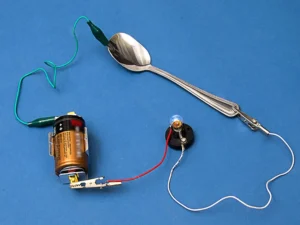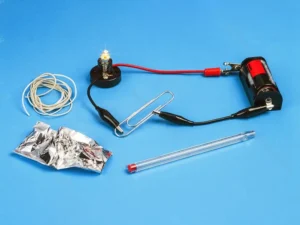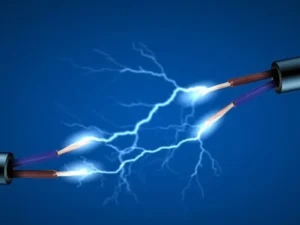Introduction
Aluminum is one of the widely used metals. It is not just the Aluminum windows or metal frames deploying its use. Instead, electrical engineering has tracked down endless benefits for your users. Does Aluminum conduct electricity? It has emerged as a potential question in recent years. The answer is not a simple yes or no but a detailed discussion with various parameters. Do you know everything? In this guide, we have highlighted aluminum metal and its conductivity-related uses.
Related: Is Aluminum Magnetic in Nature?
What determines electrical conductivity?

Electrical conductivity is the process by which cells conduct electricity. Don’t think of all the metals. They are not 100% electrical conductive. Moreover, the conduction of heat is a different phenomenon.
Now, the question is, what causes electrical conduction? In actuality, it is the electron arrangement in the lattice structure of metal and the presence of free electrons. If a metal has free electrons available, it is a good conductor of electricity.
Whenever a voltage is applied to the metal, free electrons show the movement. Since they have an electrical charge, they help conduct the electricity.
Does aluminum conduct electricity?

Yes. Aluminum is a good conductor of electricity. You can get an idea of this concept by arranging aluminum electrons. Aluminum has an atomic number of 13. The nearest noble gas has an atomic number of 10. That means aluminum has three free electrons in this lattice structure.
Whenever you apply an electrical voltage, free electrons move and carry charge from one point to another. That is what causes the aluminum to conduct.
Aluminum has 37.7 million Siemens per meter (MS/m) conductivity. Compared to copper, it has almost 61% conduction features. That stands out among the various metal options allowing electrical conduction.
A comparison of Aluminum conductivity with other metals
| Rank | Metal | Electrical conductivity (Sm-1) |
| 1 | Silver | 66.7 106 |
| 2 | Copper | 64.1 106 |
| 3 | Gold | 49.0 106 |
| 4 | Aluminum | 40.8 106 |
| 5 | Rhodium | 23.3 106 |
| 6 | Zinc | 18.2 106 |
| 7 | Nickel | 16.4 106 |
| 8 | Cadmium | 14.7 106 |
| 9 | Iron | 11.2 106 |
No doubt aluminum is a good conductor of electricity, but it stands far from our list.
- Silver is the best conductor of electricity, with a rating of 66.7. It is because of the excellent arrangement of the electrons and the availability of free charge. But you are less likely to find the use of silver in electrical wires. It is because of expensive costs and malleable and ductile properties.
- Copper ranks second with a rating of 64.1. It is because of conduction, price, and flexibility. Its excellent flexibility makes it suitable for electrical wires, connectors, and capacitor systems where electricity is necessary.
- Gold is the third most popular electrical conductor. Unfortunately, the costs are very high compared to better options like copper or aluminum. Therefore, you’ll be less likely to find its use as a conductor.
- Aluminum is fourth on our list. It is one of the best and second most used metals in electrical systems after copper. The lowest costs and light weight make it an extraordinary option. Moreover, it has a decent rating of 40.8.
- Iron is the ninth and last metal on our list. It is undoubtedly a good conductor, but heating problems can cause injury. Therefore, you will not find its use as an electrical conductor.
Six factors that increase or decrease the aluminum conductivity

Various applications need the use of better electrical conductors. At such a point, you need to consider the increase in the electrical conductivity of aluminum. The good news is it is possible with the following six factors.
Delocalized electrons
The more delocalized electrons mean better conductivity. Electrons are the key players driving the current through the metals.
An electrical conductor has more electrons than an insulator. You can’t change this parameter in a pure metal until you change its composition.
Temperature
Temperature is not a universal factor showing an increase in electrical conductivity. But aluminum and copper follow a linear increase in conductivity to some extent. However, the theory proves wrong in the case of iron, which shows a decrease in conductivity.
So, how does the temperature increase the conductivity? It mobilizes the electrons and increases their movements. Electrons carry charge from one point to another, leading to conduction.
Impurities
Impurities have been a significant factor in the conduction determination. For example, adding impurities in the pure metal decreases its electrical conduction. This case is visible with the aluminum. Pure aluminum shows better conductivity compared to impure aluminum.
Alloys
Alloy-making can significantly decrease electrical conductivity. Pure aluminum has more delocalized electrons than its alloy.
Strain
Conduction is all about the electron’s availability. Strain stretches the lattice structure and alters the conduction power. Therefore, a slight strain can result in increased or decreased conductivity based on the metal.
Pressure
Do you want to increase the conductivity of aluminum? Put additional pressure on its electrons and mobilize them effectively. It will increase the conduction capacity.
5 Grades of Aluminum
Aluminum grading defines its purity. Based on the electronic movements, you can understand whether it is a pure one or not. Its grade varies from 1000 to 8000. Here are some grades listed with their features.
- Aluminum grade 1000. It is the purest form of aluminum. No impurities or alloys are added. It has almost 61% of copper conductivity, making it a top choice for conduction purposes.
- Aluminum grade 2000. Copper, along with aluminum, also offers good conductance. But it has fewer electrical conductors compared to grade 1000.
- Aluminum grade 6000. Make this alloy by joining the aluminum, magnesium, and silicon. You can expect good conductivity from this, too.
- Aluminum grade AA-8006. It is a good conductor of electricity. Therefore, you can find a variety of electrical wires for conduction use.
- Aluminum grade AA8011. This grade has similar applications to the above. You can find it in the commercial or residential electrical wires.
Remember one thing. There is no hard and fast way to predict the conductivity of the aluminum grades. It depends on the alloys and relevant lattice structure features.
Copper vs Aluminum: which is better?
If you are comparing the copper with aluminum for the conductivity, there is no match. Copper has the best electrical conductivity, almost twice as much as aluminum.
Here are some comparison features.
- Conductivity. Copper has a rating of 64.1 according to the conductivity scale. Aluminum has a rating of 40.8.
- Aesthetic. Copper comes in various colors and gives excellent aesthetics to your systems. You can expect the same from the aluminum.
- Density. Copper is a denser material compared to aluminum. So, aluminum is a winner for its lightweight and low-density grading.
Usually, it is a personal choice whether you fall for aluminum or go for copper. Both are excellent for their premium features.
Applications of Aluminum Conductivity
Aluminum conductivity is a blessing. In a few years, it has replaced expensive copper wires. Affordable costs with faster deployment have led to the following applications of aluminum.
Electrical Transmission Lines
Aluminum isn’t a local-level player. Instead, transformers and massive transmission lines over the cities have used aluminum to conduct electricity.
There are a variety of reasons behind such uses in electrical transmission lines.
- Excellent conduction capacity
- Low density
- Cheaper costs
- Lightweight
- Easy to deploy
In-home or smaller transmission lines, you might find copper. But in 11kV transformers and bigger lines, aluminum has replaced copper and turned out to be the best alternative.
Electrical Wires
Nowadays, electrical systems have aluminum wires. No matter if it is a residential building or a commercial, aluminum conductivity has showered blessing on every part.
Do you know why? Because of lower costs and quick accessibility to the aluminum metal. Moreover, it is possible to install on a large commercial scale.
Heat Sinks
Aluminum has applications in heat sink systems due to excellent thermal conductivity. From transistors to heat sinks, all use aluminum to transfer heat from one component to another. It prevents power over surges and provides stability in the system.
Capacitors
Electronic devices, audio equipment, and the automotive industry are all progressively adopting aluminum as their crucial component. Good conduction power allows the current and effective use of many electronic devices needing capacitors.
Foils and Busbar
Who does not know about lithium-ion batteries? Guess what? They’re also using the foils for electrical conduction. The good point is the aluminum foil used at this juncture. Moreover, central power distribution centers also deploy aluminum for electrical conduction.
Conclusion
Whenever choosing aluminum metal for your electrical wires, you have to look at various factors like conductivity, protection, power surges, and deployment costs. Aluminum is the best of all these! For quality aluminum, you need aluminum metal suppliers.
No worries if you do not have any suppliers. HXSCO is there as your quality aluminum supplier. Grab a variety of aluminum alloys at lower costs. Enjoy profitable business now!
